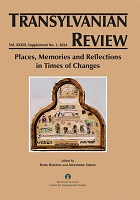The Magical Matriarchy of the Interwar Romanian Village: Ștefania Cristescu-Golopenția’s Conception
The Magical Matriarchy of the Interwar Romanian Village: Ștefania Cristescu-Golopenția’s Conception
Author(s): Corina Bistriceanu PantelimonSubject(s): Gender Studies, Cultural history, Social history, Interwar Period (1920 - 1939)
Published by: Academia Română – Centrul de Studii Transilvane
Keywords: Stefania Cristescu-Golopenþia; Dimitrie Gusti; Bucharest School of Sociology; household; magic; femininity;
Summary/Abstract: Although she has written fewer works than her colleagues with whom she collaborated in researching the spiritual manifestations of rural civilization in Romania (I. I. Ionicã, E. Bernea, D. C. Amzãr), Stefania Cristescu-Golopentia (1908–1978) is, from our perspective, one of the most original authors of the Bucharest School of Sociology. Her main contributions focus on 1) the study of magic as a natural phenomenon in rural social life, 2) profiling the most influential magical agents of traditional society (in the role of the old woman, as the most powerful among them), thereby redistributing the structuring forces of this society from customary patriarchy towards a complementarity of legitimate feminine and masculine authorities of the community, and finally, 3) redefining the sociological unity of the family through the concept of household, an almost autarkic entity of social existence.
Journal: Transylvanian Review
- Issue Year: XXXIII/2024
- Issue No: Suppl. 1
- Page Range: 93-110
- Page Count: 18
- Language: English

